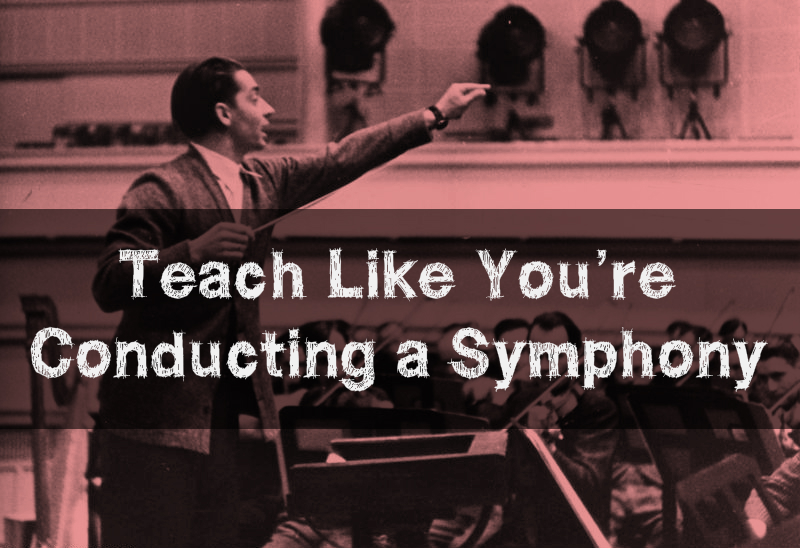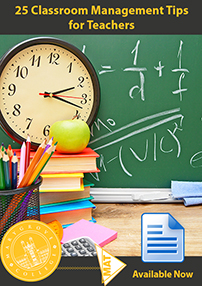
Although many of us don’t realize it until we step foot into our own classrooms, we quickly learn that facilitating a lively, but controlled classroom environment is truly an art form.We would even go so far as to liken masterful teaching to conducting a symphony. Like a conductor, master teachers know how to orchestrate tension and create anticipation; they understand rhythm and pace, and they know when to drop out and reenter the composition. Below we’ve pulled a few key elements that we believe should be part of every teacher’s conducting repertoire.
- Create anticipation: If you need a quick lesson in creating anticipation, tune into your local evening news. You’re sure to hear newscasters throw out a teaser like, say, “Up next, we’ll be talking about a popular household cleaning item…what’s in it and why it might kill you.”
Teasers like this pique our curiosity. So how do you put the anticipation strategy into play? First, make sure that your teaser is related to the subject. Second, always deliver on your teaser. In other words, you can’t say, “Today we’re going to talk about why Lady Gaga is only half as controversial as the 15th Century poet John Wilmot” and never actually talk about it.
- Don’t be afraid of the silence: Silence is one of the hardest things for new teachers to endure. When we pose questions and don’t get a response, it’s tempting to answer them ourselves. Don’t fear the silence. Give students adequate time to mull over your questions and avoid giving the answer at all costs!
- Be persistent: Persistence is another teaching essential. When we call on students who are disengaged, sleeping or not paying attention, many of them respond with “I don’t know” or “I don’t really care.” At first, we don’t want to let these students off the hook so easy, but after a while, it is tempting to give up and move on to another student. Remain persistent. Don’t allow these students to wear you down.
- Give feedback: Are you offering positive feedback at the moment when students do something well? If not, this is something to strive for. Whispering “that’s right” “uhuh” or “yes!” is all it takes to get the message across. Be careful, though, not to interrupt the flow of your students’ progress—and don’t overdo it!
- Be mindful of your voice: The way you speak is almost as important as the words you use. Be mindful of the timber and pitch of your voice. Is it too slow and soft? Is it abrasive? Do you sound enthusiastic or frustrated?
- Be mindful of your body language: You may be familiar with the classic Dr. Albert Mehabrian study that suggests humans can intuitively read—with nearly 100 percent accuracy—each other’s underlying emotions and motives simply by observing body language.
We’re not always conscious of the emotions we convey, but you can guarantee that the receivers are. Our students watch us; they know when we are frustrated, discouraged, and defensive; they feel it—and it can quickly become contagious. Similarly, when we’re excited, motivated and energetic, our students can’t help but feel it and want to be around it.
- No speeding: There is a lot to cover during the day, but there’s no value in “covering” material if students are either confused, or have reached their learning threshold. Master teachers know when it’s time to speed up, slow down, or stop completely.
- Flexibility: Our reading lessons may be dynamic (to us, at least), yet they might fail to resonate with students. Sure, our students may go through the motions, but it’s obvious that the activity or lesson isn’t working out. What would a master teacher do in this situation? She would be flexible; she would go to plan b, c, d, e, f, and so on. Never push through or force something that isn’t working.

© 2025 Created by Steve Hargadon.
Powered by
![]()